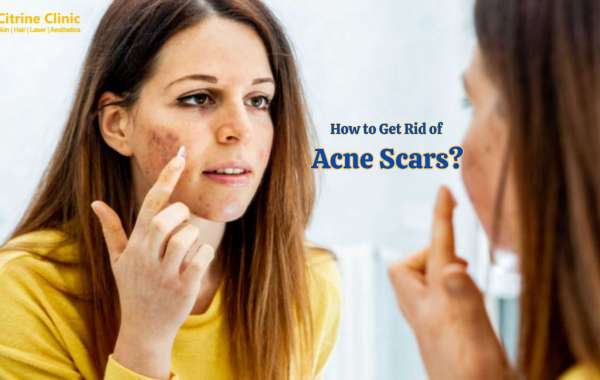Acne scars are usually the result of inflamed blemishes that are caused by skin pores engorged with excessive oil, dead cells, and bacteria.
They develop as a complication of acne and appear as small, shallow bumps or ridges. Additionally, some scars, like pits and pockmarks, can grow deeper and larger and become more difficult to cure. Between the ages of 11 and 30, acne affects about 80% of people. 95% of those people have some acne scars, or at least minor scarring. Thankfully, there are a range of treatment options through which one can get rid of their acne scars.
In this article, we have taken crucial insights from Dr. Niti Gaur, a renowned dermatologist who is known for performing the best acne scar treatment in Gurgaon. The article aims to outline information about acne scars, their types, and the effective treatment options available. The goal is to educate readers so that they can maintain their skin’s health. Keep reading to learn more.
What are the Types of Acne Scars?
Based on their appearance, acne scars can be divided into different categories. The following are some of the most typical forms of acne scars:
- Atrophic Scars: Atrophic scars include ice pick, boxcar, and rolling scars, which are characterized by depressions in the skin's surface due to tissue loss during the acne healing process.
- Ice Pick Scars: These are tiny puncture marks on the skin that are deep, thin, and pitted. They can be difficult to cure and are typically caused by severe cystic acne.
- Boxcar Scars: These depressions might be circular or oval in shape and have sharp, angular edges. They are caused by the loss of collagen during the healing process, which frequently resembles chickenpox scars.
- Rolling Scars: Rolling scars are broad depressions with a shallow, sloping edge. They give the skin a wave-like appearance and are caused by the tethering of the skin's underlying tissue.
- Hypertrophic Scars: Like most acne scars, hypertrophic scars are often raised, red, or discolored. They most commonly occur due to an overproduction of collagen during the healing process.
- Keloid Scars: Keloid scars are raised and extend beyond the boundaries of the acne lesion. They also result from overproduction of collagen and occur more frequently in individuals with a genetic predisposition.
If one is experiencing acne scars, one can schedule a consultation with the best dermatologist in Gurgaon, Dr. Niti Gaur. She will determine the type of acne scar one has and suggest an appropriate treatment accordingly.
What Causes Acne Scars?
Most frequently, an inflammatory lesion such as a papule, pustule, or cyst produces acne scars. Blemishes occur when the follicle, or pore, becomes engorged with too much oil, dead skin cells, and bacteria. The pores swell, causing a breakage in the follicle wall. When the skin's surface is in close proximity to the rupture, the lesion is typically not severe and heals quickly.
Healthy skin tissue is destroyed when the contaminated material spills into the dermis, the second of the three layers of the skin. As a result, the dermis is damaged, and the skin produces new collagen fibers to repair the damage. Collagen acts like a fibrous protein that gives the skin its strength and flexibility.
How Can One Get Rid of Acne Scars?
Every type of acne scar can be treated with the advanced treatments offered at the Citrine Clinic. Every treatment option varies depending on the type of acne and the extent of scarring. The following are the options available to treat acne scars:
- Subcision
Subcision, also known as subcutaneous incision, is a minor surgical operation that effectively treats atrophic scars. The treatment involves the use of a tri-beveled hypodermic needle, which is administered to the acne scars through a puncture in the skin’s surface. This is done to break the fibrotic strands. The depressed scars get lifted by this treatment and the connective tissue that occurs.
- Chemical Peels
Chemical peeling involves the use of chemicals to exfoliate the skin. It also helps to remove the topmost layer of the skin and helps in achieving healthy, clear, smooth skin. There are three different types of chemical peels, i.e., mild/superficial, medium, and deep peels, that vary depending on the strength of the acid and degree of penetration. The expert dermatologist, Dr. Niti Gaur, at Citrine Clinic recommends the type of chemical peel that works best according to the patient's skin type, severity of acne, and acne scar type. Based on the type of chemical peel chosen, the treatment could require additional sessions to achieve and maintain optimal results.
- Dermal Fillers
Soft tissue fillers are administered into the skin to safely plump depressed or atrophic scars, but not ice-pick scars. Most fillers offer temporary results, which often last for 6–18 months, while some are permanent too. The patient might require repeated sessions, depending on the type of filler used. However, silicon and polyacrylamide might never need replacement.
- Laser Skin Resurfacing
In this procedure, ablative or non-ablative lasers are used to resurface the skin without causing harm to the superficial skin. The treatment depends on the healing response of the body to boost the production of collagen and encourage the growth of new and healthy skin, which can replace acne scars. The procedure also works effectively to reduce the appearance of raised scars. The most common lasers used include carbon dioxide lasers, erbium YAG lasers, and pulsed-dye lasers. The expert dermatologists help determine the type of laser used according to the patient's skin type.
All these treatments mentioned above have helped many people achieve healthy and clear skin. To avail the benefits of these wonderful acne scar treatments, you can visit Citrine Clinic today!
How Can One Prevent Acne Scars?
One must follow the tips mentioned below to prevent acne scars from appearing:
- Visit a dermatologist as soon as possible and try to address the acne before it gets too severe.
- An early diagnosis and treatment of acne can prevent pimples from growing into larger ones.
- Avoid touching or picking pimples.
- Drink a lot of water to detoxify the body and remove dead skin cells.
- Keep yourself hydrated to avoid recurring breakouts and scars.
- Quit smoking; it depletes the skin's oxygen supply and slows the healing process.
- Wash your face frequently to prevent the growth of bacteria and grime.
- Live a healthy lifestyle.
When to Consult a Doctor for Treating Acne Scars?
Treating acne scars often starts with treating acne. Consult a dermatologist if one has severe acne and over-the-counter treatments have not worked. Dr. Niti Gaur is a renowned dermatologist who is known for offering the best acne scar treatment in Gurgaon. To avail the benefits of the several acne scar treatments discussed above, pay a visit to Citrine Clinic today!








